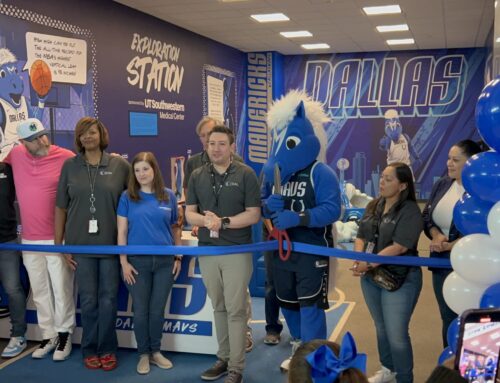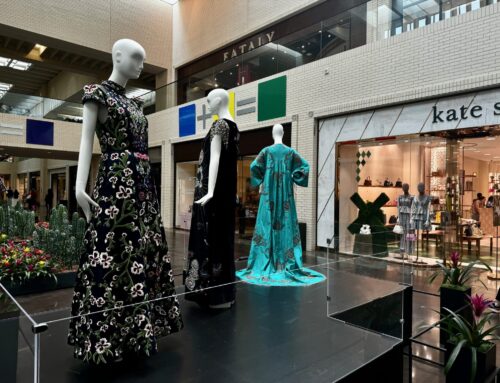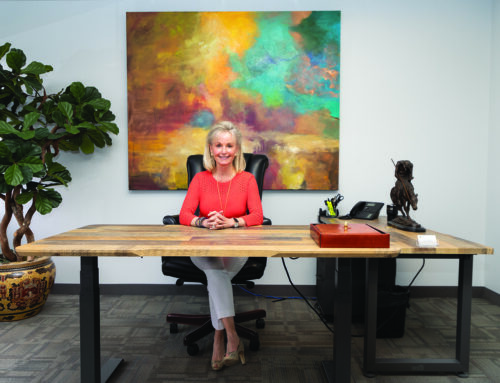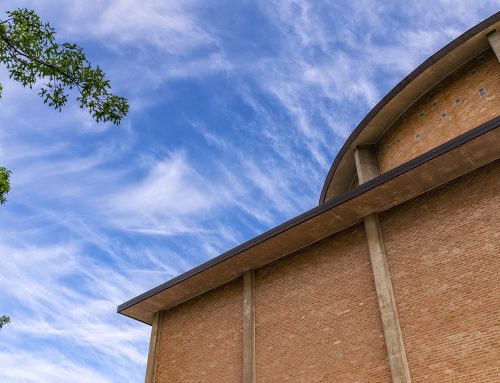‘I NEEDED CLOTHES AND YOU CLOTHED ME’

Photo by Danny Fulgencio
When a man is released from prison, Tom Dooley or a fellow volunteer ambassador meets with him and provides four sets of clothes and shoes. Dooley is president of the board of One Man’s Treasure, a nonprofit faith-based ministry. Members collect, clean and sort clothing. Volunteers then meet with men exiting prison to provide clothes and help them transition. Dooley discovered the organization in 2014, when as a volunteer, he helped develop a strategic plan. Soon he was on the board. Dooley spent a career with Alcon Laboratories. He and his family, including three adult children, lived in Australia and Tokyo before moving to Mimosa Lane. “When I retired, I had no reason to sit back,” he says. “I’ve jumped into One Man’s Treasure.”
What’s the goal of the nonprofit work?
When you get out of prison, the state of Texas gives you $100 and a bus ticket to the Houston or Dallas Greyhound station. There’s about 12,000 men that come back to Dallas every year. This year, we’re trying to get 2,000 of them clothed. They send us measurements and then we have a group of people who fit them. If prisoners plan to go the business route, we give them business clothing. If they’re going business casual, we give them khakis. If they’re going into construction or landscaping, we give them work boots, jeans, sneakers and sweatshirts. We’ve served 10,000 men over 14 years.
How does the organization work?
We have an army of about 50 or 60 women who process all the donations we get. We keep about 60 percent of what’s given to us. About 40 percent is ripped, dirty or stained. We give that 40 percent to different homeless shelters in Dallas. We then have an army of about 100 men who drop the clothing off at released prisoners’ homes. They’ll say, “You don’t know who I am, but God loves you. There’s a community of people that are here to support you.”
How many former prisoners do you serve?
In 2018, we helped about 1,500 out of the 12,000 who come back to Dallas. I don’t think we’ll ever get to the full 12,000, nor do I think we need to because some of them have only been in prison for two or three years. Their wives or mothers are waiting, and their clothes are still in their closets. Not everybody needs what we offer.
How did you get involved?
The hook that got me is the recidivism rate. In Texas, recidivism is 43 percent, but the recidivism rate for the 10,000 men that we’ve touched is 14 percent. The people that we’re serving also come from this neighborhood. There’s such a misconception as to who’s in our state prison system. It’s about a third white, a third black and a third Hispanic. There’s a gentleman who’s involved in our organization. In college, he had a mishap, and somebody died. He went to prison for 20 years because of it. Regular guy. Wrong place at the wrong time.
What are your goals?
We’re trying to get our message out. Our cause doesn’t appeal to everybody, and we understand that. In the order of where people want to donate their money, it’s women with children, homelessness, vets and then men coming out of prison. We know where we are in the pecking order of empathy, and we’re not going to try to change that. But it’s been shocking. As we tell our story, people say, “I have a family member who was in prison.” That’s the thing that has surprised me as I go around this neighborhood.
How does religion play a role in the organization?
We believe it’s part of our formula of success. If we were to simply ring a doorbell, throw a bag of clothes at you and then walk away, I don’t think the impact would be the same. The fact that distinguishes us is that a stranger is willing to sit, have coffee, provide a cell phone number and say, “I’ll do everything I can to help you.”
How can people help?
We live on donations of clothing. We have relationships with about 50 churches. I’ve used the Nextdoor app, and the response has been overwhelming. We buy new socks and new underwear, but most everything else that we give is donated. We need sizes all the way up to 7X. We usually buy that stuff because no one is donating, generally, the large sizes. We’re always looking for money. But it’s not our primary need. We need jeans, work boots, sneakers, nice T-shirts and collared shirts.
What about female prisoners?
We do not serve women. They represent about 9 percent of the state prison population. When women request clothing, we connect them with Dress for Success and other organizations. We just don’t have the resources to service that segment.
What’s coming up for the organization?
We want to hire another staff member. We have four part-time staff members. Our biggest weakness is getting more men to know who we are. We’ve recently added a board member who works at J.C. Penney. Our annual fundraiser is April 11 at the Museum of Biblical Art. At last year’s event, a young man told his story. He described how a man showed up at his halfway house with a bag of clothes and talked to him about God. Things fell into place, and he got a job as a male model. He strutted this room, and he was a fabulous looking guy. I can’t imagine that he had that confidence the day before he got released from prison. That was one of those “wow” moments showing the impact that our organization can make.
What other “wow” moments have you had?
About six months ago, we were doing construction on our warehouse. Two guys who had been released within the last week and were living in a halfway house donated their time to help with the work. I was driving them back to the halfway house, and I asked one to use Waze to help with direction. I handed him my phone and he says, “What is this? What do I do?” He had been in prison for five years. He was in his late 20s. Technology changes so fast. There’s a huge adjustment for them.
Have you ever felt endangered?
Never.






